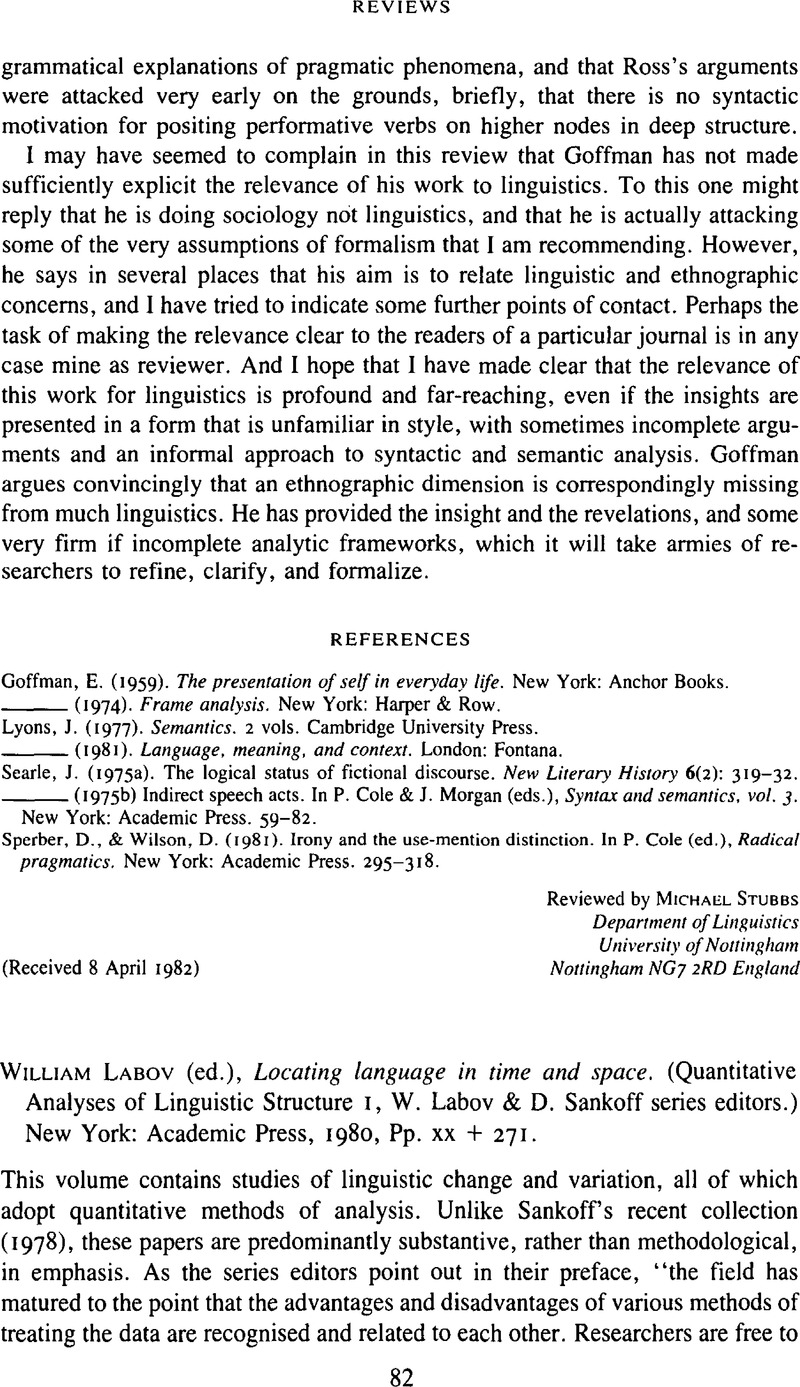No CrossRef data available.
Article contents
William Labov (ed.), Locating language in time and space. (Quantitative Analyses of Linguistic Structure 1, W. Labov & D. Sankoff series editors.) New York: Academic Press, 1980, Pp. xx + 271.
Published online by Cambridge University Press: 18 December 2008
Abstract
An abstract is not available for this content so a preview has been provided. Please use the Get access link above for information on how to access this content.

- Type
- Book Review
- Information
- Copyright
- Copyright © Cambridge University Press 1983
References
REFERENCES
Beaken, M. A. (1971). A study of phonological development in a primary school population of East London Ph.D. thesis, University of London.Google Scholar
Fasold, R. W. (1978). Language variation and linguistic competence. In Sankoff, (ed.). 85–96.Google Scholar
Fought, J. G. (1973). Rule ordering, interference, and free alternation in phonology. Language 49(1): 67–86.CrossRefGoogle Scholar
Labov, W. (1966). The social srratfication of English in New York City. Washington, D.C.: Center for Applied Linguistics.Google Scholar
Labov, W. (1981). Resolving the neogrammarian controversy. Language 57(2): 267–308.CrossRefGoogle Scholar
Milroy, J. (1982). Probing under the tip of the iceberg: Phonological “normalization” and the shape of speech communities. In Romaine, S. (ed.), Sociolinguistic variation in speech communities. London: Edward Arnold. 35–47.Google Scholar
Milroy, J., & Harris, J. (1980). When is a merger not a merger?: The MEAT/MATE problem in a present-day English vernacular. English World-Wide 1(2): 199–210.CrossRefGoogle Scholar
Sankoff, D. (ed.) (1978). Linguistic variation: Models and methods. New York: Academic Press.Google Scholar
Weinreich, U., Labov, W., & Herzog, M. (1968). Empirical foundations for a theory of language change. In Lehmann, W. & Malkiel, Y. (eds.), Directions for historical linguistics Austin: University of Texas Press.Google Scholar


